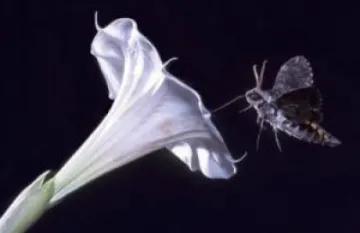Regents Professor Emeritus - Neuroscience
Degrees and Appointments
-
A.B. 1964, Harvard University
-
PhD 1969, Rockefeller University
Fields of Study: Neuroscience
Research
My research long has combined anatomical, behavioral, chemical, and neurophysiological methods in a multidisciplinary approach to problems of the organization, physiology, functions, and postembryonic development of insect nervous systems. The main goal of this work has been to discover fundamental principles and mechanisms common to many or all nervous systems through studies of the experimentally favorable nervous systems of insects. In view of the importance of insects in their own right, I also have aimed to contribute to knowledge that will help to alleviate the harm done by insects that are predators of plants cultivated for food, fuel or fiber or are vectors of microbial or parasitic pathogens. My principal interests include: the physiology, functional organization, and postembryonic development of the olfactory system; sensory control of mating behavior and insect-host interactions, including feeding and oviposition behaviors; chemical ecology and behavioral aspects of interactions with host plants; olfactory learning; and the behavior and sensory neurobiology of local species of Triatomine insects (“kissing bugs”) as potential vectors of Chagas Disease.

Functional organization and physiology of the insect olfactory system. My work has focused mainly on the olfactory system of the giant sphinx moth Manduca sexta. Using intracellular recording and staining methods, extracellular and multi-unit recording techniques, and pharmacological manipulations, my coworkers and I have explored the neuronal circuitry and synaptic interactions in the antennal lobe (AL), the primary olfactory center in the moth's brain. We also have used histological and neuronal tracing methods to learn about the anatomical organization of the AL and its sensory inputs. Our goal has been to understand mechanisms of information processing in the olfactory pathways in the CNS. Much of our work has focused on the sexually dimorphic olfactory subsystem in the male moth that is specialized to detect and process information about the female's sex pheromone. We also have conducted multi-level studies of the detection and central processing of information about volatile organic compounds (VOCs) emitted by living plants. We have been especially interested in central neural mechanisms encoding olfactory information about behaviorally significant mixtures of VOCs. In addition to our primary focus on the AL, we also are very interested in the higher-order olfactory pathways in the protocerebrum that are involved in processing of the outputs of the ALs and their integration with information of other modalities.
Behavior and chemical ecology. In parallel with our studies of the olfactory system of Manduca, we have investigated the identities of the VOCs emitted by living host- and non-host plants and used a variety of chemical, physiological and behavioral methods to identify behaviorally significant compounds in those complex mixtures. We also have studied the effects of VOCs on the behavior of flying Manduca in the field and in a laboratory wind tunnel.
Postembryonic, metamorphic development of the olfactory system. For many years we have been interested in neural development and plasticity in the ALs during the postembryonic development of Manduca. Among the outcomes of this line of research is our early finding that certain, sexually dimorphic glomeruli characteristic of male and female ALs develop only if the AL is innervated, respectively, by axons of genetically male or female olfactory receptor cells.
My laboratory closed in May 2016. Since July 2014, I have been serving as International Secretary of the National Academy of Sciences.
Mitchell RF, Hall LP, Reagel PF, McKenna DD, Baker TC, Hildebrand JG (2017) Odorant receptors and antennal lobe morphology offer a new approach to understanding olfaction in the Asian longhorned beetle. J Comp Physiol A, 203:99–109
Goldman-Huertas B, Mitchell RF, Lapoint RT, Faucher CP, Hildebrand JG, Whiteman NK (2015) Evolution of herbivory in Drosophilidae linked to loss of behaviors, antennal responses, odorant receptors and ancestral diet. Proc Natl Acad Sci USA 112:3026-3031
Lei H, Chiu H-Y, Hildebrand JG (2013) Responses of protocerebral neurons in male Manduca sexta to sex-pheromone mixtures. J Comp Physiol A 199:997-1014
Martin JP, Lei H, Riffell JA, Hildebrand JG (2013) Synchronous firing of antennal-lobe projection neurons encodes the behaviorally effective ratio of sex-pheromone components in male Manduca sexta. J Comp Physiol A 199:963-979
Riffell JA, Lei H, Abrell L, Hildebrand JG (2013) Neural basis of a pollinator’s buffet: olfactory specialization and learning in the Manduca sexta moth. Science 339:200-204 Published online 6 December 2012 [DOI:10.1126/science.1225483]
Reisenman CE, Savary W, Cowles J, Gregory TL, Hildebrand JG (2012) The distribution and abundance of triatomine insects, potential vectors of Chagas Disease, in a metropolitan area in Southern Arizona, United States. J Med Entomol 49:1254-1261
Reisenman CE. Gregory T, Guerenstein PG, Hildebrand JG (2011) Feeding and defecation behavior of Triatoma rubida and its potential role as a vector of Chagas Disease in Arizona, USA. Am J Trop Med Hygiene 85:648-656
Martin JP, Beyerlein A, Dacks AM, Reisenman CE, Riffell JA, Lei H, Hildebrand JG (2011) The neurobiology of insect olfaction: sensory processing in a comparative context. Prog Neurobiol 95:427-447






